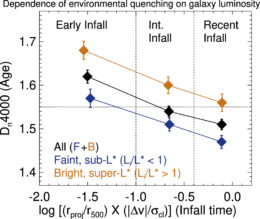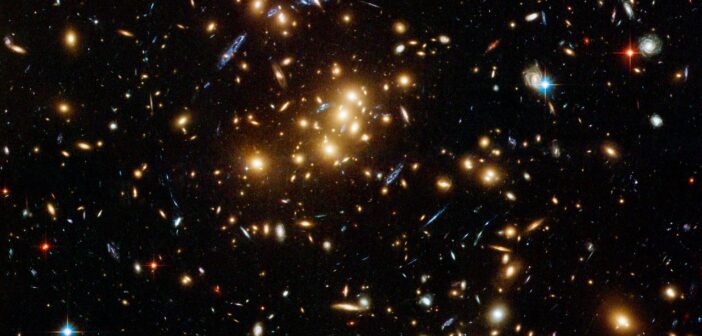Living in a crowded cluster neighborhood can have a big impact on a galaxy. New research looks to galaxies beyond the local universe to test how living in a galaxy cluster affects galaxies’ stellar populations.
Cluster Influence

Spiral galaxy Messier 83 is alight with pink and blue star forming regions. Observations suggest that cluster membership can slow a galaxy’s star formation. [NASA, ESA, and the Hubble Heritage Team (STScI/AURA); Acknowledgement: W. Blair (STScI/Johns Hopkins University) and R. O’Connell (University of Virginia)]
That’s what happens in the local universe — does the same story hold for galaxies farther away?
A Higher-Redshift Investigation
Keunho Kim (University of Cincinnati) and collaborators used observations of galaxy clusters spanning 5 billion years of the universe’s history to test this finding farther back in time. The team analyzed South Pole Telescope and Atacama Cosmology Telescope observations of 105 galaxy clusters at redshifts 0.26 < z < 1.13 (about 5.4–10.7 billion years after the Big Bang).

Left: Diagram showing the orbit of a galaxy as it falls in to a cluster. Right: Corresponding locations on the position–velocity plot. Click to enlarge. [Kim et al. 2023]
Slowing Down Star Formation

Demonstration of how stellar populations become older as time since infall increases. This result holds for galaxies of all luminosities studied. [Kim et al. 2023]
If the average age of a galaxy’s stars increases with time spent in a cluster, this means that living in a galaxy cluster suppresses star formation — just as was found for local galaxies. This result holds regardless of the luminosity of the galaxy or its redshift, giving us clues about the process responsible for stopping star formation. Given the time frames involved, Kim and collaborators suggest that the process responsible for quenching star formation proceeds slowly, such as the removal of the circumgalactic medium that would normally replenish a galaxy’s star-forming fuel.
Citation
“A Gradual Decline of Star Formation since Cluster Infall: New Kinematic Insights into Environmental Quenching at 0.3 < z < 1.1,” Keunho J. Kim et al 2023 ApJ 955 32. doi:10.3847/1538-4357/acecff

